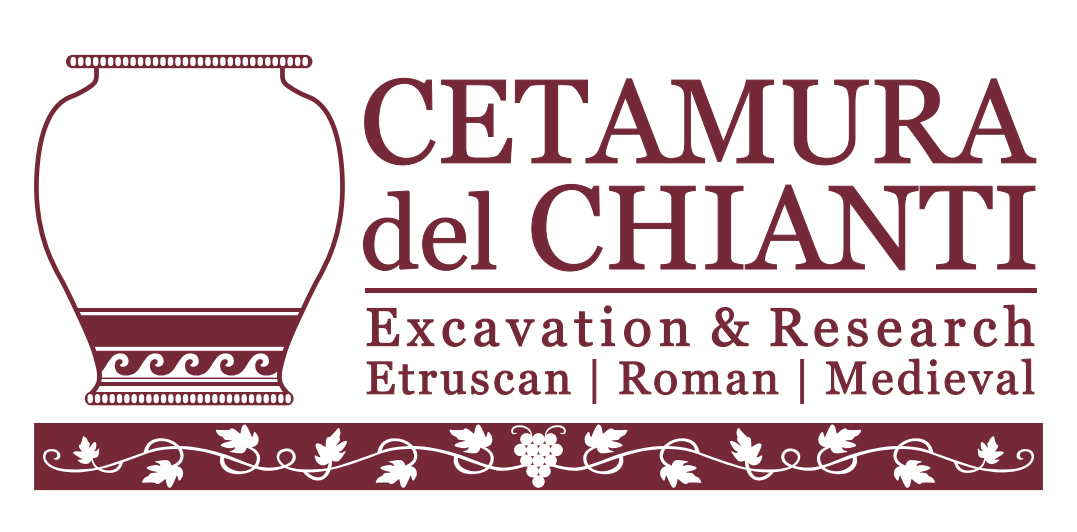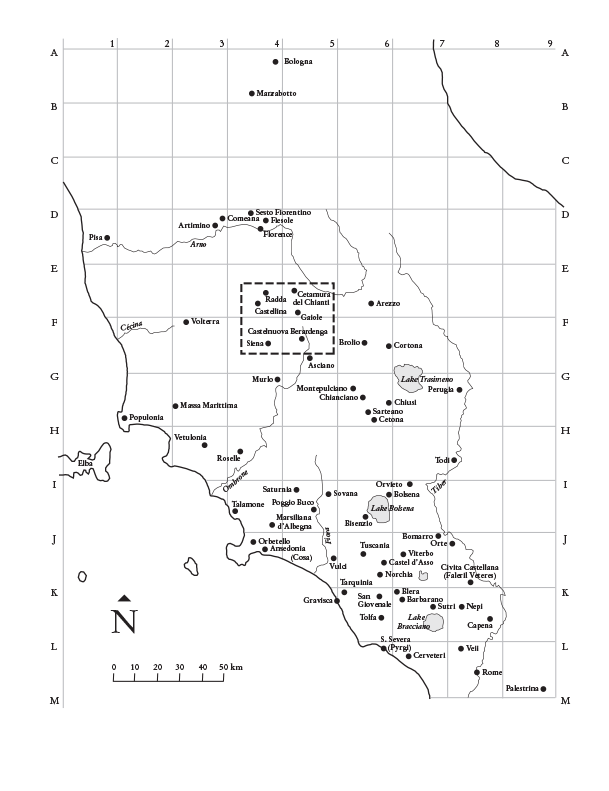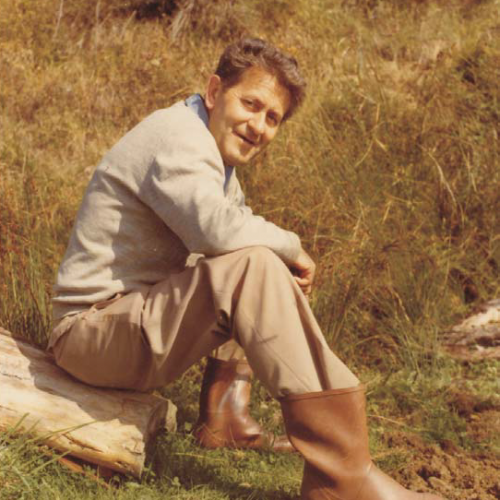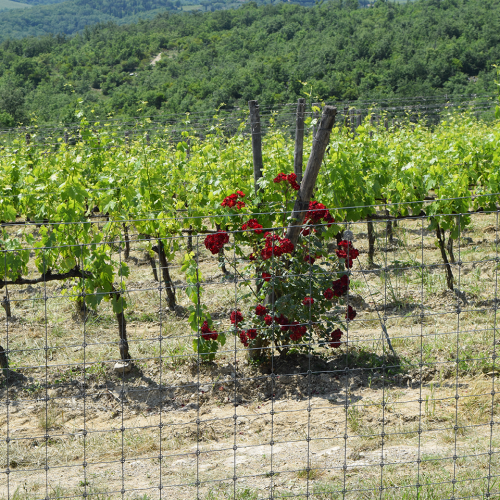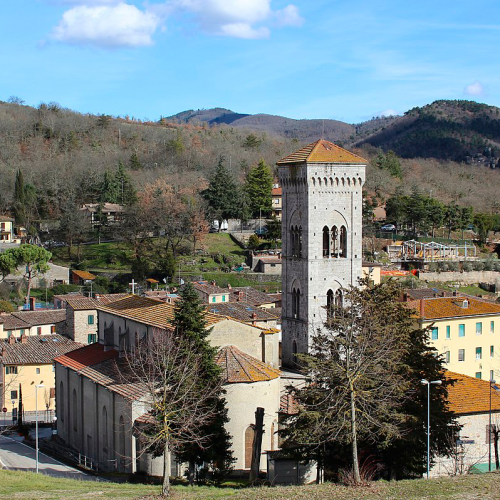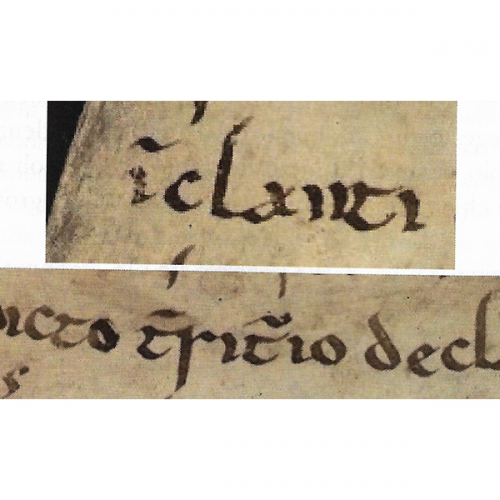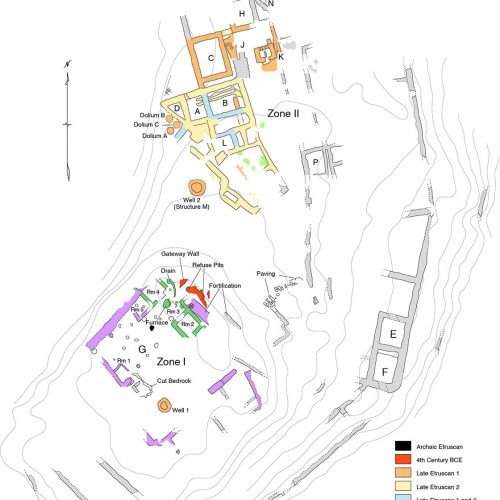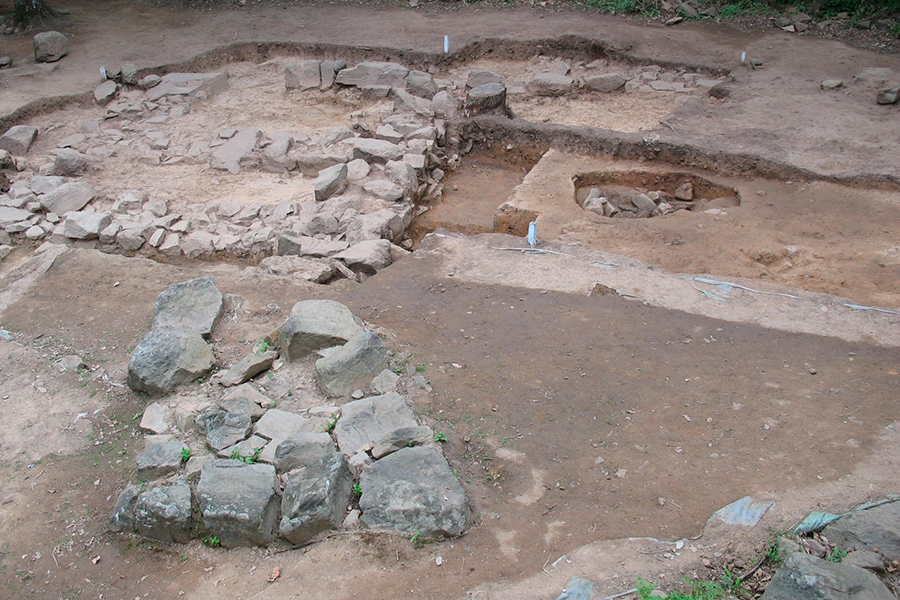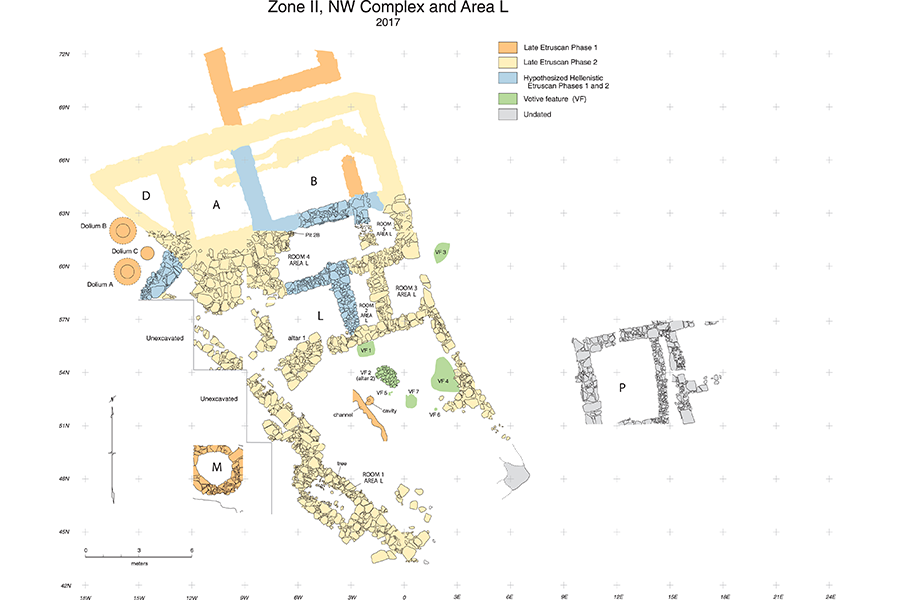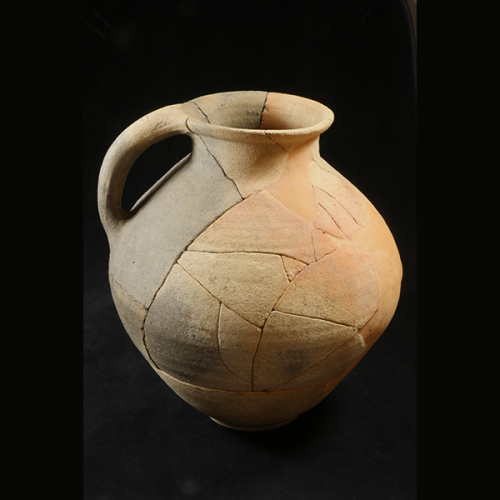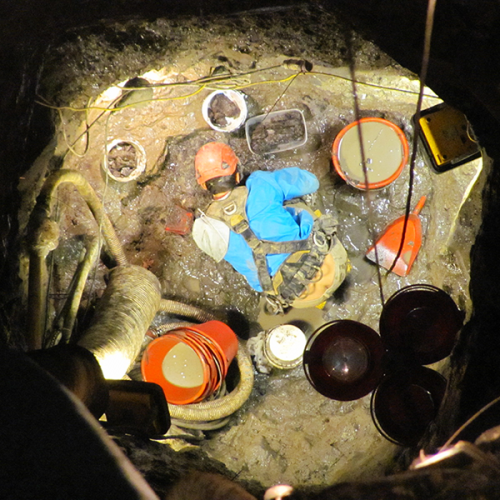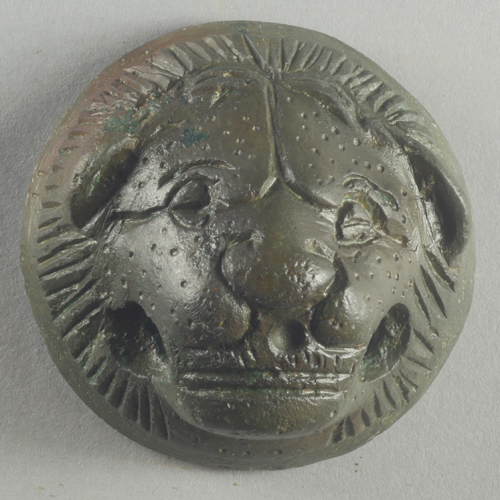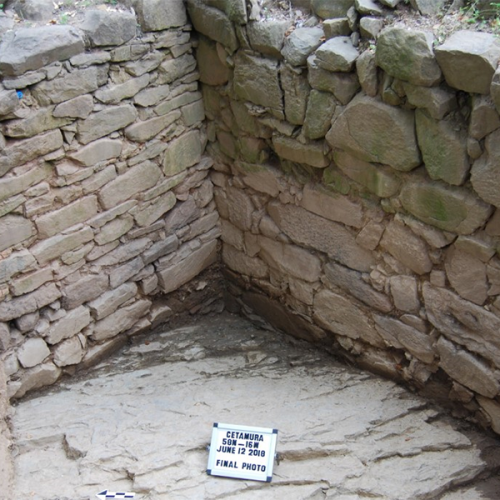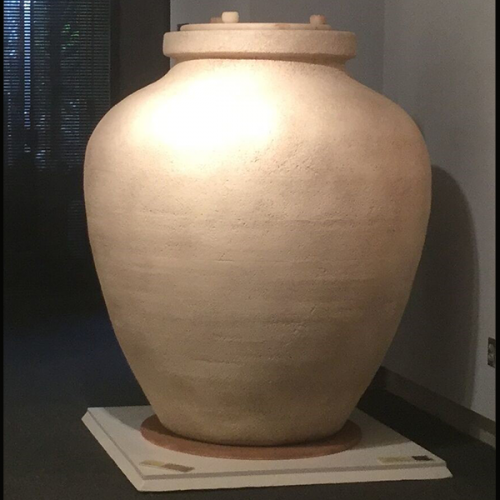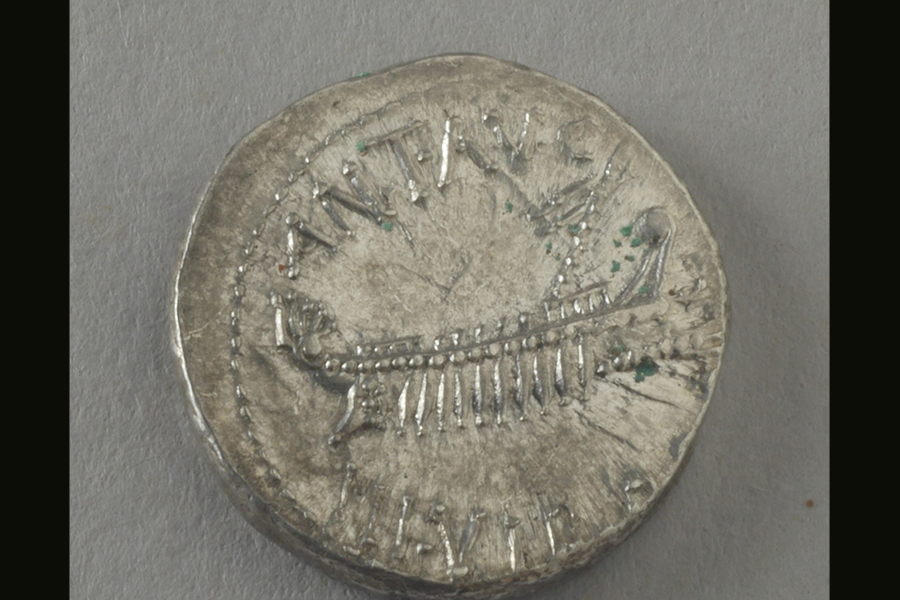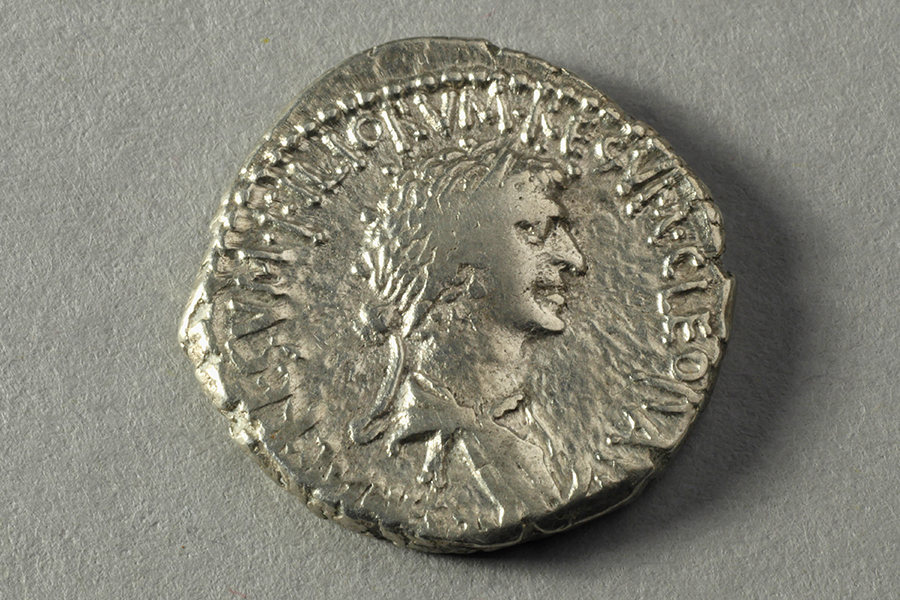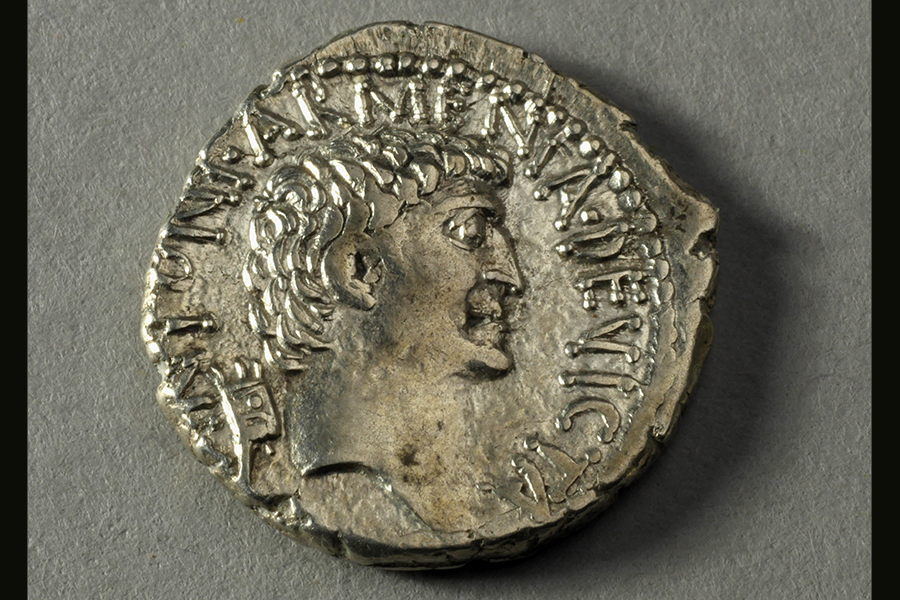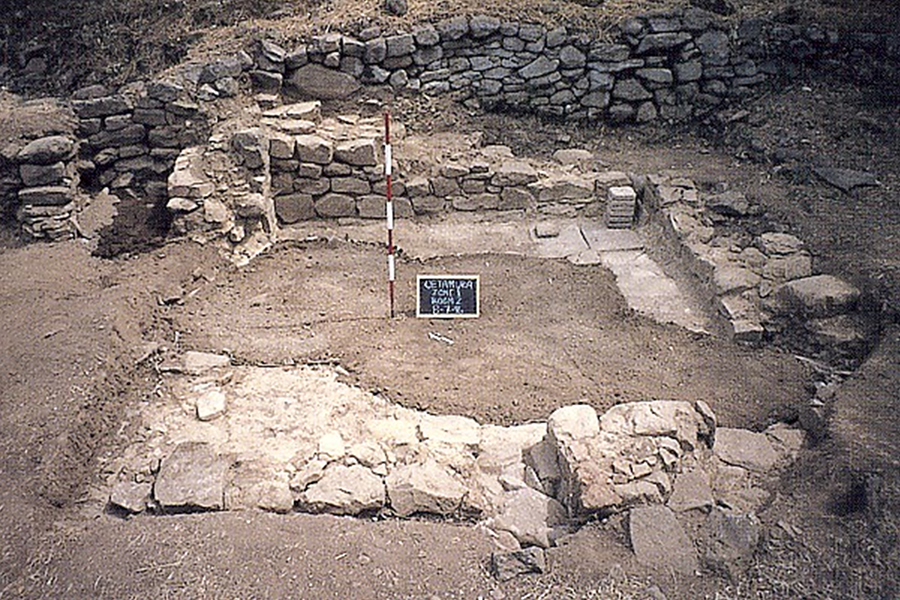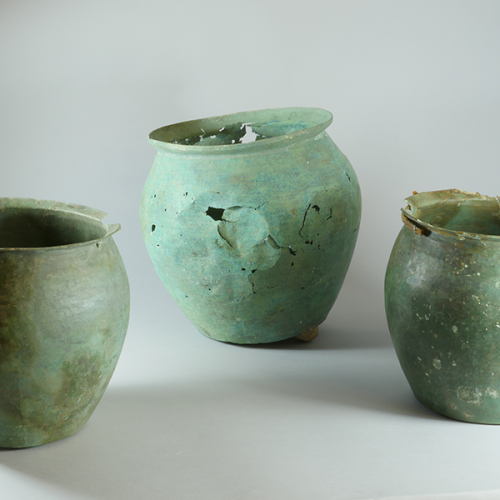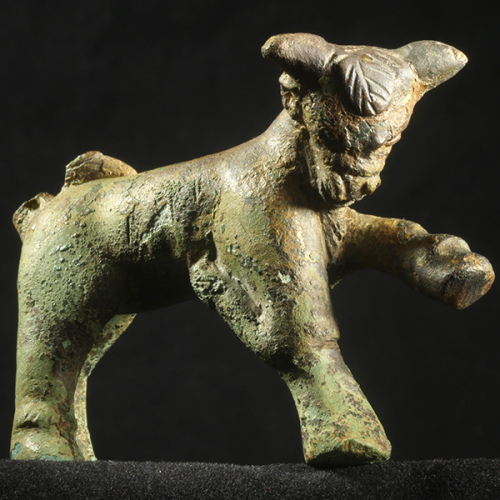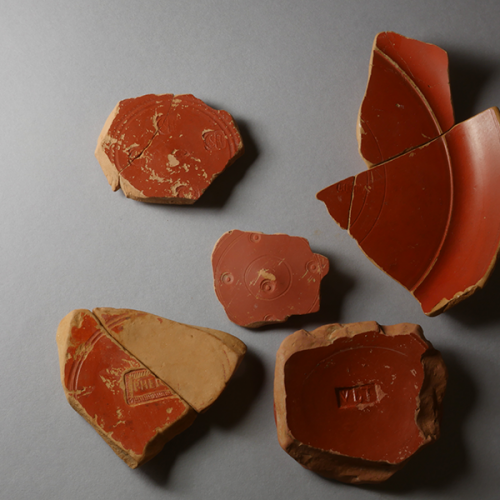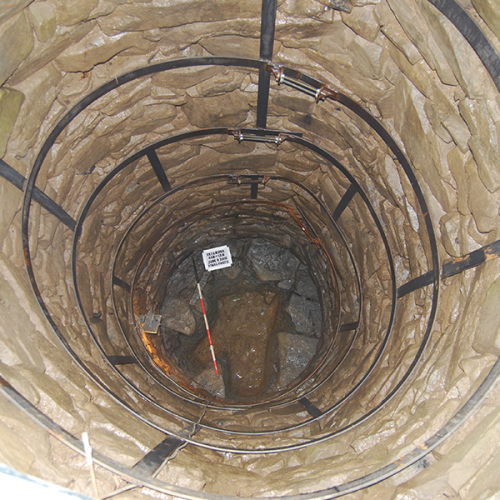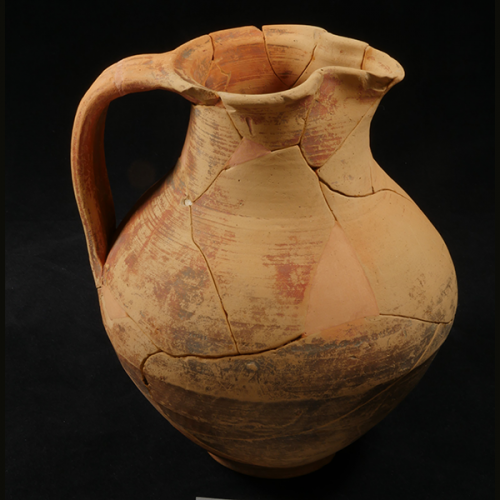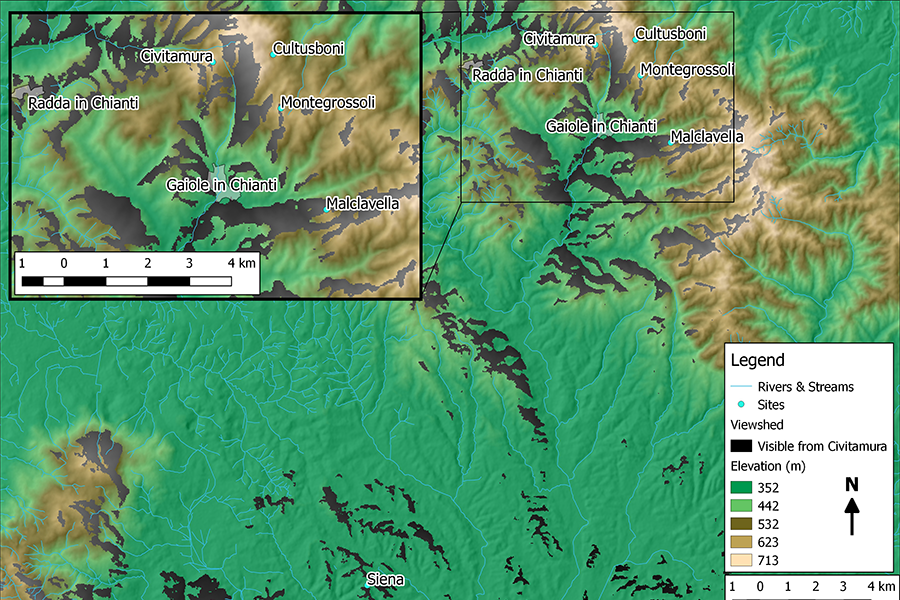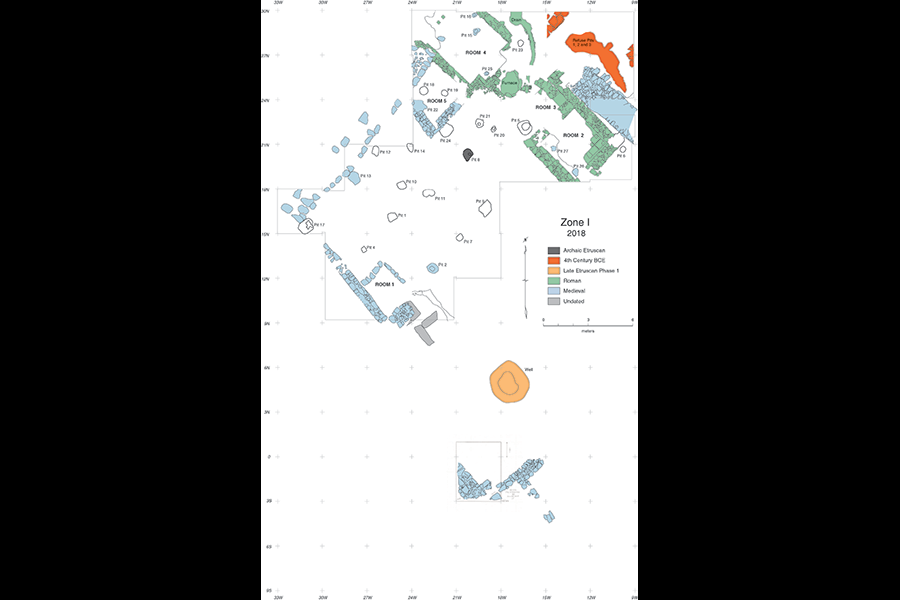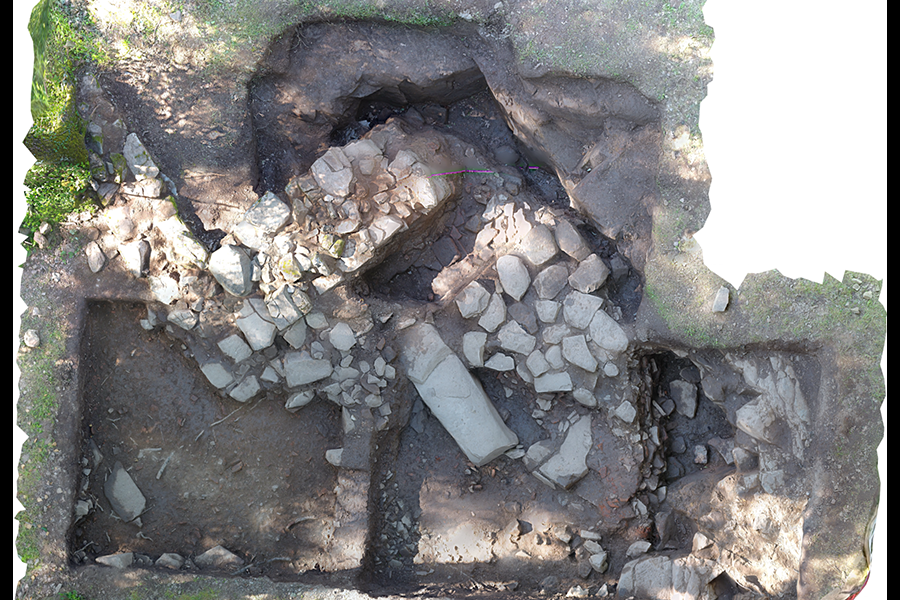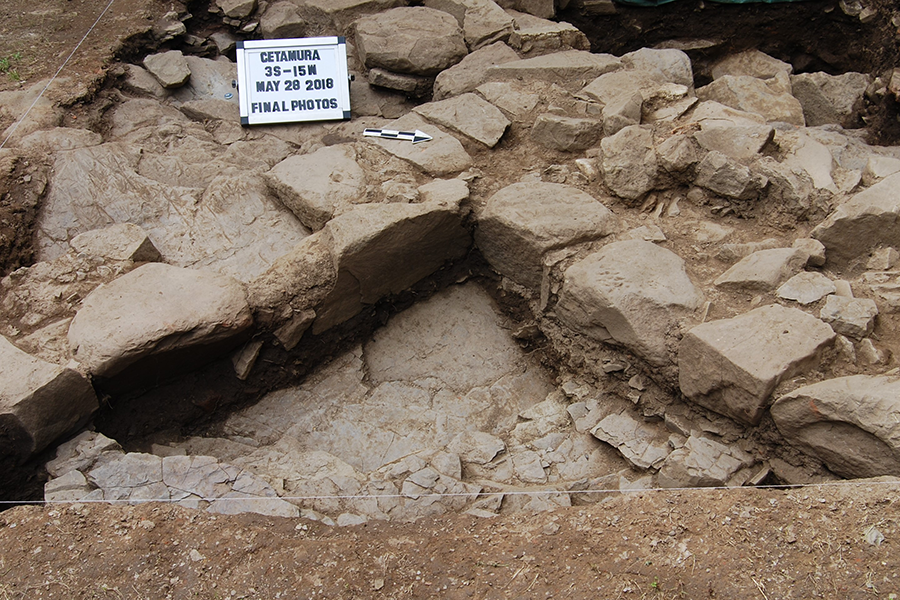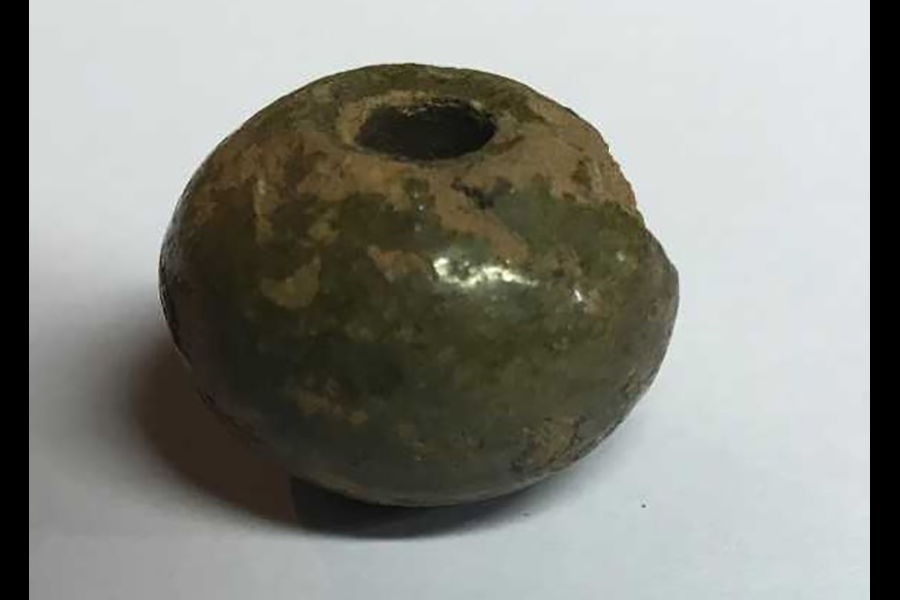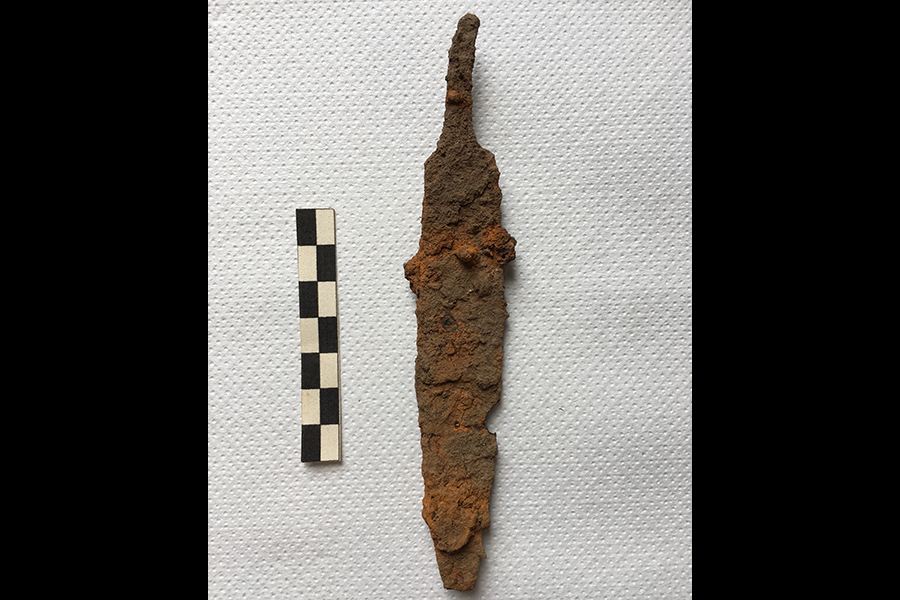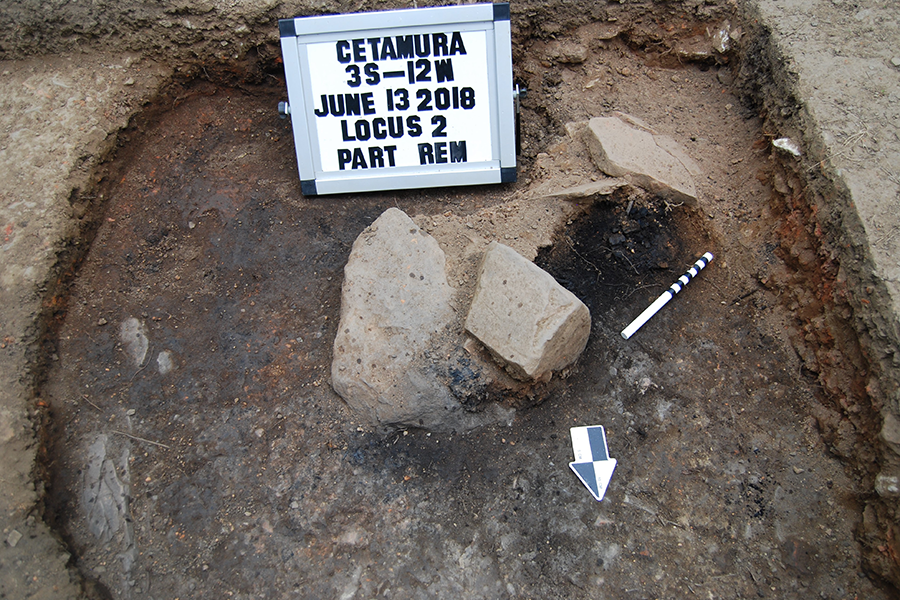ABOUT
Cetamura and Chianti
Cetamura del Chianti is a hill 695m above sea level, located in the Chianti mountain chain about 30 km northeast of Siena, on the property of the Badia a Coltibuono [a.]. It lies within the jurisdiction of the Comune of Gaiole in Chianti (province of Siena). Nearby are springs that lead to an intermittent stream called the Torrente Massellone, which flows down to the valley of Gaiole. The hilltop was settled successively by Etruscans, Romans and Italians of the Middle Ages, but is deserted today.
Archaeological remains were originally discovered by Alvaro Tracchi [b.], an avocational archaeologist from nearby San Giovanni Valdarno, in 1964. The permit for excavation was first granted to Florida State University in 1973, as a course in the FSU Florence Program administered through the Department of Classics. The excavations and research continue today as a unit in International Programs of FSU, in collaboration with the Florence Program.
The site is in the heart of the district of Chianti [a.], world-famous for its wines[c.], within minutes of the three towns that are part of Chianti Storico, the original Chianti district: Gaiole [d.], Radda and Castellina. Chianti wines are now made in a much larger zone of Italy, but historical research shows that the name of the district first was applied in the area around the Massellone, in particular in a document of the Badia a Coltibuono, where it is referred to as Clante [e.].
Maps of the site are color coded to show the various phases that have been identified in the many years of excavation at the site [f.]. There are two major zones: Zone I, featuring an Etruscan well, Roman baths and the foundations of the medieval castle; and Zone II, featuring the Etruscan sanctuary and artisans’ quarter. Details about the various structures with further maps may be found under Project History.
ARTISANS’ ZONE, SANCTUARY AND WELLS, 7TH-1ST CENTURIES BCE
The Etruscans
The earliest evidence for the Etruscans at Cetamura dates to the 7th century BCE. After a hiatus in the 5th century BCE, they established an Artisans’ Zone in the 3rd-2nd century BCE, and a Sanctuary in the 2nd century BCE [a., b., c.]. In the Artisans’ Zone they worked iron, made ceramics and practiced spinning and weaving. The Etruscan Sanctuary was dedicated to the little known gods Lur and Leinth and featured two altars and seven stations for offerings to the gods. An abundance of Etruscan materials of different periods was found inside Well # 1 [d., e.] and Well # 2. Near the Sanctuary and Well # 2 (Structure M) was an area where evidence of huge storage jars was found [f., g.].
BATHS, AN ESTATE WITH VINEYARDS; 1ST CENTURY BCE-4th CENTURY CE
The Romans
Romans began to interact with Etruscans at least from the 3rd century BCE, but the place remained Etruscan until after the time of the Battle of Actium, 31 BCE. Coins of the emperor Augustus and of the fleet of Mark Antony and Cleopatra, probably taken by Augustus to pay his veterans, suggest that a veteran of the Battle of Actium was given the land at Cetamura [a., b., c.]. The veteran built a suite of baths with an underfloor (hypocaust) heating system [d.], and enjoyed wine from the vineyards previously established by the Etruscans. Romans kept up usage of Well # 1 and Well # 2 and many Roman artifacts, including 13 bronze vessels [e.] , were found in Well # 1. Of particular interest was a miniature votive bronze bull [f.]. There was also abundant evidence of trade with the makers of fine red-gloss pottery from Roman Arezzo. [g.] Well # 2 (Structure M), originally an Etruscan well [h.] was cleaned out in later Roman times, and numerous Roman water pitchers of the 3rd-4th centuries CE were found. [i.].
THE CASTRUM (CASTLE) OF CIVITAMURA, 11TH-12TH CENTURY CE
The Middle Ages
Documents of the 12th century CE from Badia a Coltibuono refer to a castrum (castle) called Civitamura, later Cetamura. It was contemporary with the well-known ruined castle of Montegrossoli (Montegrosso) and the newly rediscovered castle of Malclavella, both near Gaiole and both owned by members of the Firidolfi family [a.]. There is reason to believe that Civitamura also belonged to the Firidolfi (later Ricasoli). Recent excavations on Zone I of Cetamura have uncovered heavy foundation walls [b., c., d.] that probably were part of the castle. Objects certainly of medieval date have been found in connection with the walls: a glazed spindle whorl [e.] and an iron knife (f.] Dating by means of Carbon 14 samples confirms the dating in the documents [g.] . The castle at Civitamura may have been torn down at the end of the 12th century by Florentines who were angry at the Firidolfi for plundering trade convoys bound for Florence.
